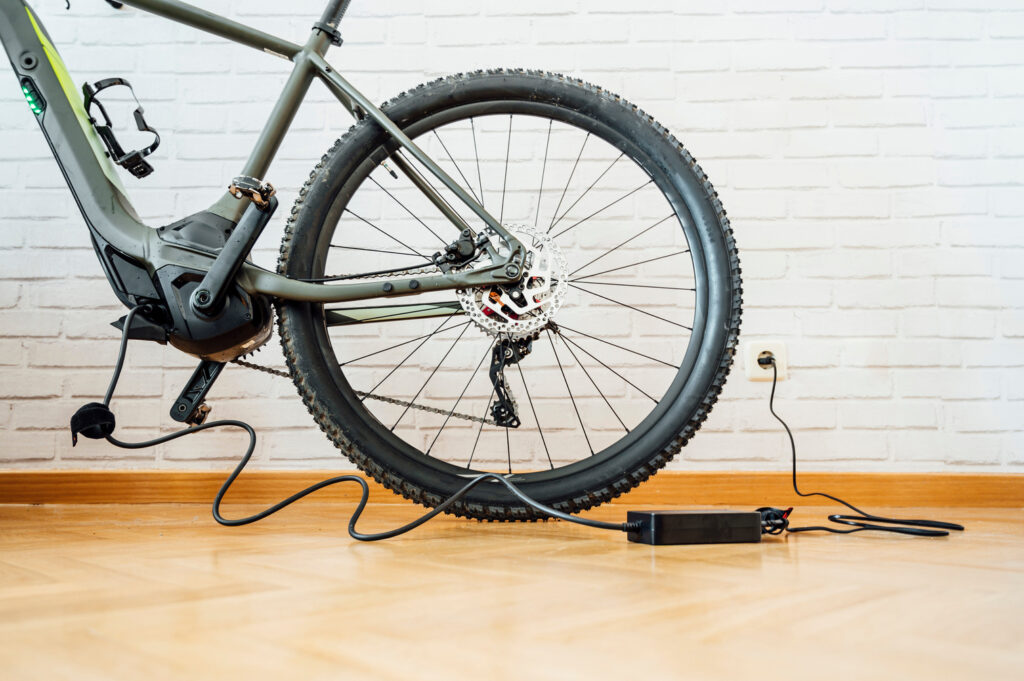Get ready to unlock the secrets to maintaining your e-bike battery and ensuring long-lasting performance! Our comprehensive maintenance guide is designed to be your ultimate resource, catering to both new riders and seasoned pros. We’ve got you covered with easy-to-understand instructions, expert tips, and even product recommendations that can enhance your e-bike experience. From specialized cleaning solutions to must-have tools, we’ve got it all. Remember, a well-maintained electric bike not only improves performance but also extends its lifespan. So whether your e-bike is your trusty commute companion, off-road adventure buddy, or weekend escape vehicle, responsible ownership starts with proper maintenance. Let’s delve into the world of e-bike battery maintenance and charge your ride to new heights!
E-Bike Battery Maintenance

Importance of Battery Maintenance
Proper maintenance of your e-bike battery is crucial for ensuring optimal performance and longevity. By following a few simple steps, you can maximize the lifespan of your battery and avoid expensive repairs. Regular maintenance also helps maintain the range and power output of your e-bike, allowing you to enjoy your rides for longer periods.
How to Extend Battery Lifespan
There are several steps you can take to extend the lifespan of your e-bike battery:
Avoid Complete Discharge
Try to avoid completely draining your battery, as this can put unnecessary strain on it. Ideally, recharge the battery when it reaches around 20-30% capacity.
Avoid Extreme Temperatures
Extreme temperatures, both high and low, can negatively impact the performance and lifespan of your battery. Avoid exposing your e-bike to extreme temperatures and ensure that it is not stored in locations with fluctuating temperatures.
Avoid Storage at Full Charge
If you won’t be using your e-bike for an extended period, it is recommended to store the battery at around 40-60% charge. Storing the battery at a full charge or in a completely discharged state can shorten its lifespan.
Maintain Proper Voltage Levels
Regularly check the voltage levels of your battery and ensure that they are within the manufacturer’s recommended range. If the voltage drops too low, recharge the battery promptly to prevent damage.
Proper Battery Handling and Installation
When handling and installing the battery, make sure to follow the manufacturer’s instructions. Improper handling and installation can lead to damage and affect the performance of the battery.
Regular Inspection and Cleaning
Regular inspections and cleaning of your e-bike battery are essential to maintain its performance and longevity:
Visual Inspection
Periodically inspect the battery for any signs of damage, corrosion, or leakage. Look for bulging or deformed areas, as these can indicate internal damage. If you notice any issues, consult a professional for further assessment.
Cleaning Battery Terminals and Connectors
Clean the battery terminals and connectors regularly to ensure a good connection and prevent corrosion. Use a soft cloth or brush to remove any dirt or debris. Avoid using water or detergents unless specified by the manufacturer.
Inspecting Wiring and Cables
Check the wiring and cables connected to the battery for any fraying or damage. Ensure that all connections are tight and secure. If you notice any issues, have them addressed by a professional.
Checking for Physical Damage
Inspect the battery for any physical damage, such as dents or cracks on the housing. Physical damage can affect the battery’s performance and pose safety risks. If you find any damage, consult a professional for further evaluation.
Protective Measures for Water and Dust
Depending on your riding conditions, consider using protective covers or cases to shield the battery from water and dust. This will help prevent damage and ensure the longevity of the battery.
Safe Storage
Proper storage of your e-bike battery is essential to maintain its performance and safety:
Storage Location
Choose a storage location that is dry, well-ventilated, and away from direct sunlight. Avoid storing the battery near flammable or hazardous materials.
Optimal Temperature and Humidity
Store the battery at a stable temperature and humidity level. Extreme temperatures and humidity can impact the battery’s performance and lifespan. Aim for a storage temperature range recommended by the manufacturer.
Battery Removal and Security
If you plan to store your e-bike for an extended period, consider removing the battery and storing it separately. This will prevent any potential damage or theft. Ensure that the battery is stored in a secure location.
Storage Preparation
Before storing the battery, make sure it is properly charged to the recommended level. Consult the manufacturer’s guidelines for specific instructions on storing the battery.
Monitoring Battery Health During Storage
During the storage period, periodically check the battery’s voltage levels and perform a visual inspection. If you notice any abnormalities, consult a professional for further evaluation.

Avoid Extreme Temperatures
Extreme temperatures can have a significant impact on your e-bike battery’s performance and lifespan:
Effects of High Temperature
Exposure to high temperatures can cause the battery’s capacity to degrade rapidly. It can also lead to overheating and potentially damage the battery cells. Avoid leaving your e-bike in direct sunlight or hot environments for extended periods.
Effects of Low Temperature
Cold temperatures can reduce the battery’s performance and capacity temporarily. Avoid exposing the battery to freezing temperatures, as it can cause irreversible damage. If you ride in cold weather, consider using insulating covers or storing the battery indoors when not in use.
Battery Protection Measures
To protect your battery from extreme temperatures, consider using thermal insulation materials or covers designed specifically for batteries. These can help regulate the temperature and prevent rapid temperature changes.
Preventing Thermal Runaway
Thermal runaway is a rapid uncontrolled increase in temperature that can occur in lithium-ion batteries. To prevent thermal runaway, avoid overcharging the battery and exposing it to extreme temperatures.
Temperature Monitoring and Management
Consider investing in an e-bike with a built-in temperature monitoring system. This will help you keep track of the battery’s temperature and take necessary precautions to prevent damage.
Avoid Overcharging
Overcharging your e-bike battery can negatively impact its performance and safety:
Understanding Overcharging
Overcharging occurs when the battery is left connected to the charger for an extended period beyond its full charge. This can cause the battery to overheat, leading to reduced capacity and potential damage.
Potential Risks of Overcharging
Overcharging can shorten the battery’s lifespan and increase the risk of overheating, leakage, or even a fire hazard. It is essential to avoid overcharging to ensure safe and optimal battery performance.
Importance of Using the Correct Charger
Always use the charger provided by the manufacturer or a compatible charger recommended for your e-bike battery. Using an incorrect charger can result in overcharging and damage to the battery.
Smart Charging Systems and Features
Consider investing in e-bike chargers with smart charging systems or features. These chargers automatically stop charging when the battery reaches its full capacity, preventing overcharging.
Using Charge Indicators and Alarms
Pay attention to the charge indicators or alarms on your e-bike charger. These will notify you when the battery is fully charged, allowing you to disconnect it promptly and avoid overcharging.

Monitor Battery Health
Regularly monitoring the health and performance of your e-bike battery is essential for its longevity and safety:
Battery Management Systems (BMS)
Many e-bike batteries come equipped with a Battery Management System (BMS), which monitors and manages the battery’s performance. Familiarize yourself with the BMS features and use them to keep track of your battery’s health.
Capacity Testing
Perform periodic capacity testing to assess the battery’s performance. Follow the manufacturer’s guidelines or consult a professional for accurate testing methods.
Voltage Monitoring
Monitor the voltage levels of your battery regularly. Sudden drops or fluctuations in voltage can indicate potential issues. Consult the manufacturer’s guidelines for the optimal voltage range.
Usage Data and Analysis
Keep a record of your e-bike’s usage, including distance traveled and battery usage. Analyzing this data can help you identify any patterns or issues that may affect the battery’s performance.
Utilizing Manufacturer Resources
Refer to the manufacturer’s resources, such as user manuals or online guides, for specific recommendations on battery maintenance and monitoring. They can provide valuable insights on ensuring the longevity and safety of your battery.
Avoid Interrupted Charging
Interrupted charging can affect the performance and lifespan of your e-bike battery:
Effects of Interrupted Charging
Interrupted charging, such as frequent disconnections or power surges, can lead to incomplete charging or voltage fluctuations. This can negatively impact the battery’s performance and overall lifespan.
Charging Interruptions and Safety
Ensure a stable power source when charging your e-bike battery. Avoid charging in areas with frequent power outages or fluctuations to prevent potential damage to the battery.
Avoiding Charger Disconnection
When charging your battery, make sure the charger is securely connected to both the e-bike and the power source. Use cable management systems or straps to prevent accidental disconnections during charging.
Battery Protection against Interruptions
Invest in e-bike batteries with built-in protection against interrupted charging. These batteries have safety features that prevent damage in case of charging interruptions.
Resuming Charging Properly
If charging is interrupted, disconnect the charger from the power source and the e-bike, then reconnect it and resume charging properly. This will ensure a complete and safe charging cycle.
By following these maintenance practices and charging etiquette, you can maximize the performance and lifespan of your e-bike battery. Remember to consult the manufacturer’s guidelines and seek professional assistance when necessary. Happy riding!




